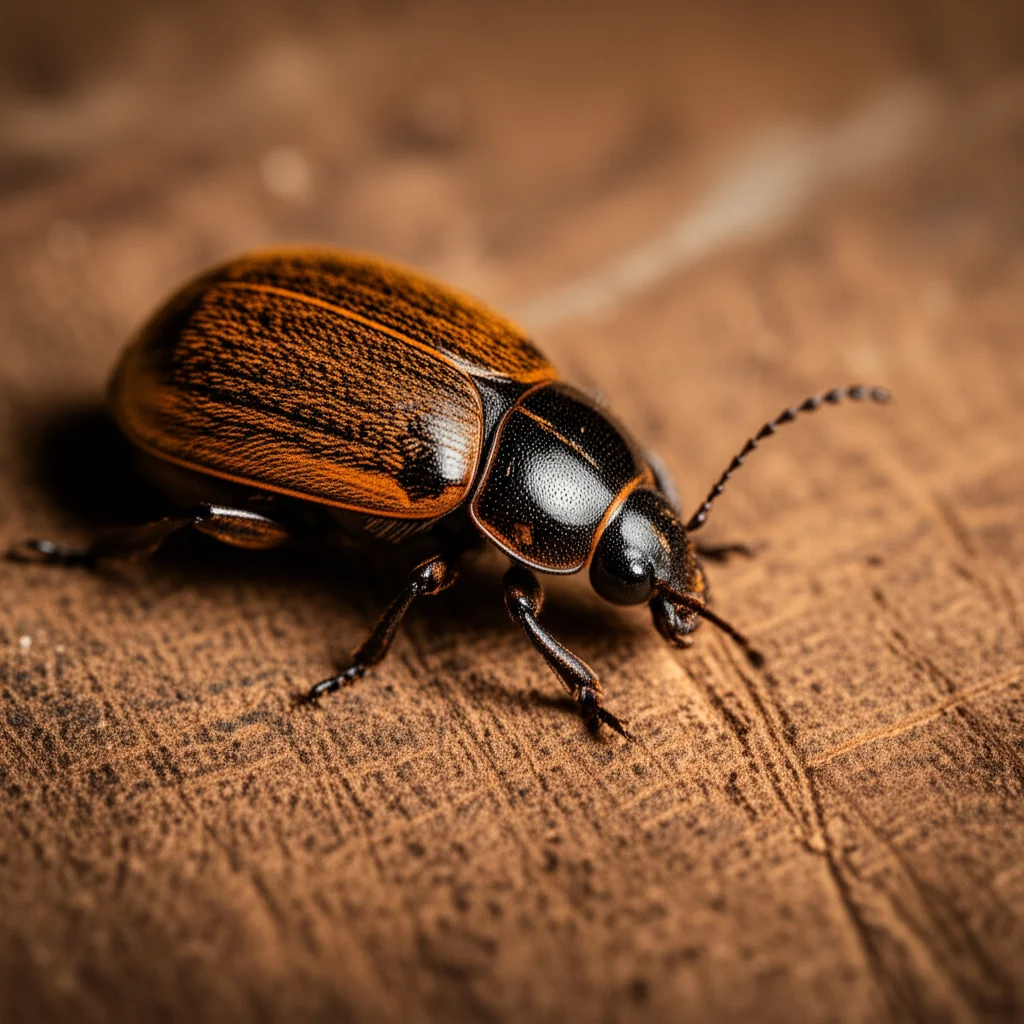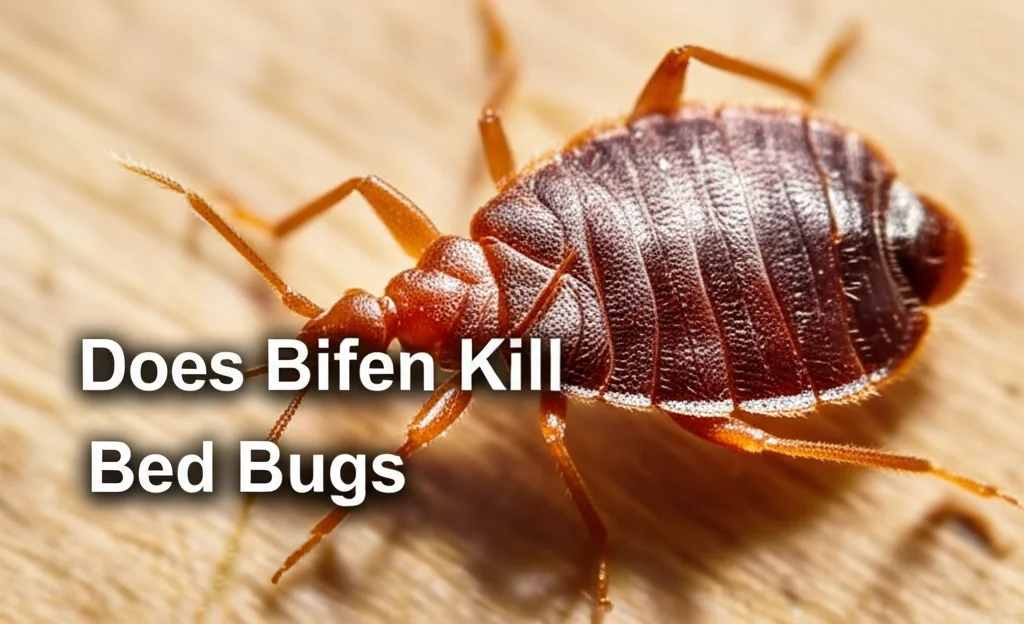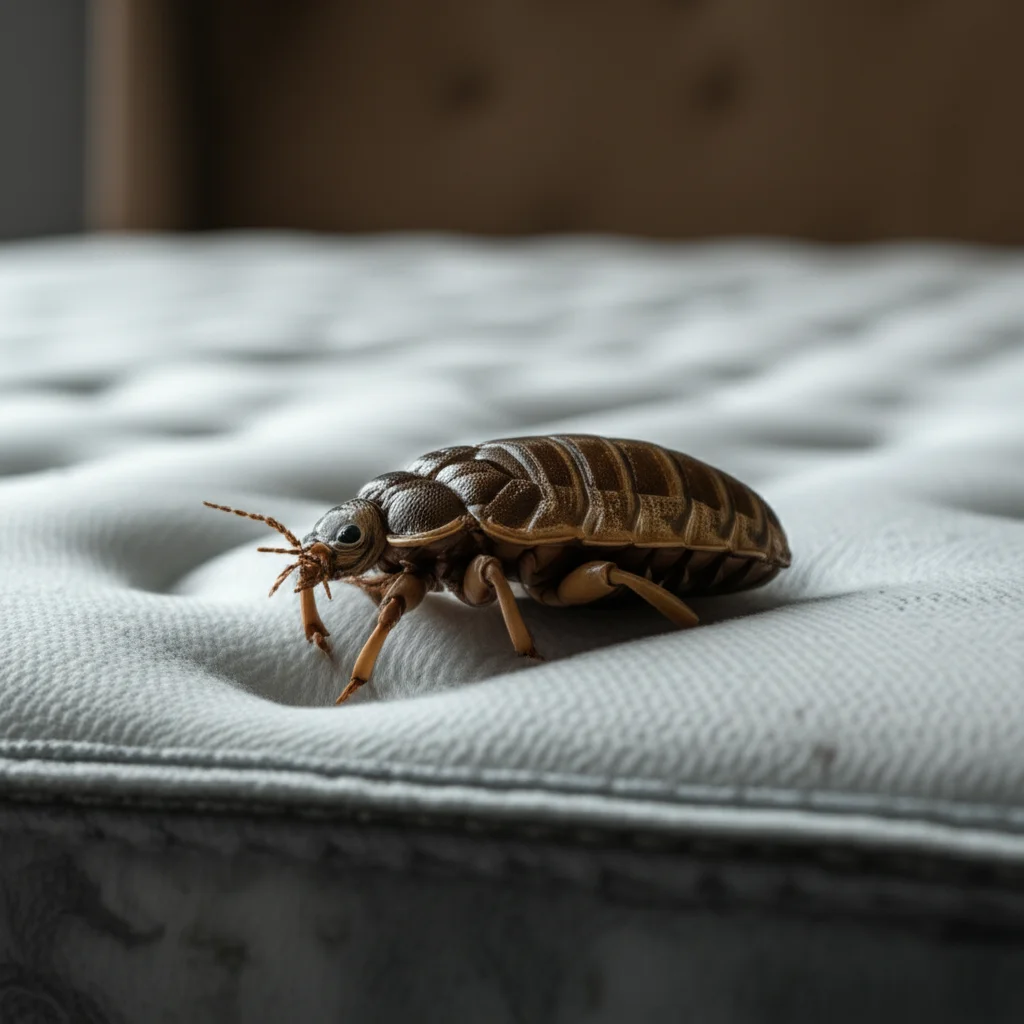· Todd Martin · Pest Control · 16 min read
Does Heat Kill Carpet Beetles

Can Heat Effectively Eliminate Carpet Beetles from Your Home?
Finding carpet beetles in your home can be upsetting. These tiny pests feed on natural fibers, causing damage to carpets, clothing, and upholstered furniture. Many people wonder about effective ways to get rid of them, and a common question arises: does heat kill carpet beetles? It is a natural and often appealing method compared to harsh chemicals.
I have spent time researching and understanding pest control strategies. Heat is indeed a powerful tool against many insects, including these unwelcome fabric pests. This article explores how heat can be used to combat carpet beetle infestations. We will look at various heat treatment methods, from simple DIY techniques to professional solutions. I will also share important safety tips and discuss how to combine heat with other strategies for complete eradication. My goal is to give you clear steps to protect your home from carpet beetles.
Takeaway:
- Heat can effectively kill carpet beetles at all life stages.
- Temperatures above 120°F (49°C) are lethal to these pests.
- DIY methods like hot laundering and steam cleaning work for small items.
- Professional heat treatments are best for severe, widespread infestations.
- Thorough preparation and safety are crucial for any heat application.
A Clear Answer: Does Heat Kill Carpet Beetles?
Yes, heat does kill carpet beetles. Exposing carpet beetles, their larvae, and eggs to sufficiently high temperatures is an effective way to eradicate them. These insects cannot survive prolonged exposure to temperatures above their thermal death point, typically around 120°F (49°C) for several minutes or higher for shorter durations.
Understanding Carpet Beetles: Common Home Invaders
Carpet beetles are small insects that can become significant pests in homes. They are not just found in carpets; their name reflects their common habitat. These beetles are attracted to a wide range of natural materials. Understanding their habits helps us fight them effectively.
Carpet beetles are usually less than a quarter-inch long. They come in various species, like varied carpet beetles, black carpet beetles, and furniture carpet beetles. All these types share a common diet. They feed on animal products and natural fibers. This includes wool, silk, leather, fur, feathers, and even dried foods.
The adult beetles themselves do not cause much damage. They are mostly interested in mating and laying eggs. It is the larvae that are the real culprits. These tiny, fuzzy, worm-like creatures munch through fabrics. They can leave irregular holes in carpets, clothing, and tapestries. You might find them in quiet, undisturbed areas. These spots include under furniture, in closets, or inside air ducts. Recognizing their presence early is key to preventing extensive damage. Regular vacuuming and inspection can help spot them before an infestation takes hold. Always check vulnerable items like wool sweaters or antique rugs.
The Science of Thermal Eradication: How Heat Affects Pests
Heat is a powerful natural pesticide. Many organisms, including insects, have specific temperature ranges they can tolerate. When temperatures rise above this range, their bodily functions begin to fail. This is the principle behind using heat to kill carpet beetles.
Carpet beetles, like most insects, are cold-blooded creatures. This means their body temperature is regulated by their environment. When exposed to heat, their internal systems cannot cope. High temperatures cause proteins in their bodies to denature. This is similar to how an egg white changes when cooked. Essential enzymes and structural proteins break down. This process disrupts their metabolism, nerve function, and ability to move. Ultimately, it leads to their death.
Different life stages of the carpet beetle react to heat in slightly different ways. Eggs and larvae are generally more vulnerable. Adult beetles may be a bit more resilient but still succumb to sustained heat exposure. Research shows that temperatures between 120°F (49°C) and 140°F (60°C) are highly effective. The duration of exposure is also important. A quick blast of very high heat might work, but a longer exposure to moderate heat is often more reliable. For example, staying at 120°F (49°C) for several hours is usually enough to kill all life stages. This method targets every beetle, from the tiniest egg to the crawling larva.
DIY Heat Solutions for Carpet Beetles: What You Can Do
You can use several do-it-yourself heat methods to combat carpet beetles. These methods are best for treating individual items or small, localized infestations. They are generally safe and avoid chemical use. I often recommend trying these before considering more drastic measures.
Hot Laundering
This is one of the easiest and most effective methods for fabrics. Wash infested clothing, bedding, and small rugs in hot water. Use the highest temperature setting your fabric can safely handle. Follow the washing with a high-heat drying cycle. The combination of hot water and hot air is usually lethal to carpet beetles, their larvae, and eggs. Always check care labels to prevent damage to delicate items. This method works well for washable items that have come into contact with beetles.
Steam Cleaning
Steam cleaners produce high-temperature steam that can penetrate fabrics. You can use a handheld steam cleaner on carpets, upholstery, and crevices where beetles might hide. Move the steam cleaner slowly over the affected areas. The steam needs to be hot enough and maintain contact for a few seconds. This ensures the heat penetrates deep enough to kill the pests. Steam cleaning also helps remove dirt and debris, which can be a food source for beetles. This method is excellent for treating larger items that cannot be put in a washing machine. For general upkeep and to keep carpets clean, regular deep cleaning your carpet without a machine can also reduce pest harborage.
Using a Clothes Dryer
For items that are dry-clean only or cannot be washed, a clothes dryer can still be effective. Place infested items in the dryer on a high heat setting for at least 30 minutes. Make sure the dryer reaches a temperature of at least 120°F (49°C). This dry heat will dehydrate and kill the beetles. Again, always check fabric care labels. This method is especially useful for items like throw pillows or stuffed animals. It offers a quick way to sterilize items without water.
Sun Exposure
For items that cannot be washed or machine-dried, direct sunlight can be an option. Place infested items like rugs or upholstered cushions outdoors on a hot, sunny day. Drape them over a line or spread them out. Ensure direct sun exposure for several hours, preferably when temperatures are at their highest. The goal is to raise the internal temperature of the items to lethal levels for the beetles. This method is less precise than other heat treatments. It relies on ambient temperature and sunlight intensity. It may require longer exposure times to be effective. Combining this with thorough vacuuming before and after helps.
Professional Heat Treatments: A Powerful Approach
For serious or widespread carpet beetle infestations, professional heat treatment is often the most effective solution. This method involves raising the temperature of an entire room or even a whole house. It ensures that heat penetrates every crack, crevice, and fabric where carpet beetles might be hiding. I have seen this method deliver excellent results in severe cases.
Professional pest control companies use specialized equipment for these treatments. They bring in industrial heaters and fans. These devices gradually raise the ambient temperature of the infested area to around 120-140°F (49-60°C). The temperature is then maintained for several hours, typically between four to eight hours. This sustained heat ensures that all life stages of carpet beetles—eggs, larvae, pupae, and adults—are killed. The heat reaches areas that sprays or dusts might miss. This includes inside walls, under carpets, and deep within furniture.
One major advantage of professional heat treatment is its non-toxic nature. No chemicals are involved, which makes it safe for homes with children, pets, or individuals with chemical sensitivities. The process effectively eradicates pests without leaving any harmful residues. However, it requires careful preparation of the home. All heat-sensitive items must be removed or protected. This includes plastics, candles, electronics, and artwork. A professional team will guide you through this preparation. They also monitor temperatures carefully throughout the process. This ensures the treatment is effective and does not damage your property. For particularly stubborn fabric pests, combining professional treatments with careful attention to items like how to kill dust mites in sofa can lead to full eradication.
Preparing Your Home for Successful Heat Extermination
Proper preparation is vital for any heat treatment to be successful. Whether you are using DIY methods or hiring professionals, taking these steps ensures the heat reaches its targets and prevents damage to your belongings. I always stress the importance of this phase. Without it, your efforts might not yield the desired results.
First, identify all infested areas and items. Carpet beetles love dark, undisturbed places. Check under furniture, along baseboards, inside closets, and behind wall hangings. Look for their larvae, shed skins, or adult beetles. Once you know where they are, you can focus your efforts. My personal experience shows that a thorough inspection prevents missing hidden spots.
Next, conduct a deep clean of the infested areas. This includes thorough vacuuming of carpets, rugs, and upholstery. Pay special attention to edges and seams. Vacuuming removes adult beetles, larvae, eggs, and their food sources like pet dander or lint. After vacuuming, immediately seal the vacuum bag in a plastic bag and dispose of it outside. This prevents any captured beetles from escaping back into your home. Regular how to keep carpet clean practices are also part of ongoing prevention. For areas like along walls, knowing how to clean carpet along walls effectively is important.
Finally, prepare items for treatment. For DIY methods, separate washable items for hot laundering. For professional whole-house heat treatment, remove all heat-sensitive items. This includes:
- Flammable materials: Aerosol cans, lighters, paints, gasoline.
- Melting hazards: Candles, plastics, vinyl records, certain electronics, artwork, medications, cosmetics.
- Perishables: Food, plants, pets.
- Pressurized items: Oxygen tanks, fire extinguishers.
A professional pest control company will provide a detailed checklist. Following it closely will protect your belongings. This careful preparation is not just about safety. It ensures the heat can circulate freely and effectively reach every part of your home where pests might be hiding.
Safety First: Important Precautions with Heat Methods
While heat is a chemical-free way to kill carpet beetles, it still requires careful handling. High temperatures can pose risks to people, pets, and property if not managed correctly. Always prioritize safety when attempting any heat-based pest control. I emphasize this because prevention of harm is just as important as pest eradication.
When using DIY heat methods, be mindful of specific dangers. For hot laundering, always check fabric care labels. Overheating delicate materials can cause shrinkage, fading, or permanent damage. Never put items in a dryer that are not meant for high heat. With steam cleaners, the steam is extremely hot. Avoid directing it at skin or body parts. Wear protective gloves and closed-toe shoes. Ensure proper ventilation in the room to prevent excessive humidity, which could lead to mold growth. Always follow the manufacturer’s instructions for your specific appliance.
For professional whole-house heat treatments, safety protocols are even more critical. Evacuate all people and pets from the home before the treatment begins. This includes any house plants. Professional technicians are trained to handle the equipment safely. They monitor temperatures from outside the structure to prevent overheating and fire hazards. They also ensure the area is clear before allowing re-entry. Never attempt a whole-house heat treatment yourself. It requires specialized equipment and expertise. Mistakes can lead to serious risks, including fire or structural damage.
In all cases, ensure proper ventilation after any heat application. This helps dissipate residual heat and moisture. Always use common sense and err on the side of caution. If you are unsure about treating a particular item, consult a professional. Your safety and the integrity of your home are paramount.
Combining Strategies for Comprehensive Carpet Beetle Control
While heat is highly effective against carpet beetles, a multi-faceted approach often yields the best results. Combining heat treatments with other pest control strategies creates a more robust defense. This ensures you eliminate existing infestations and prevent new ones. I often advise clients to think of it as a comprehensive battle plan.
Vacuuming is your first line of defense and should be done regularly. Use a powerful vacuum with appropriate attachments. Focus on cracks, crevices, baseboards, and under furniture. These are common hiding spots for carpet beetles and their larvae. Frequent vacuuming removes eggs, larvae, and adult beetles. It also eliminates their food sources like lint, pet hair, and food crumbs. After vacuuming, immediately seal and dispose of the vacuum bag outside. For general carpet care, understanding how to clean your carpet properly with a machine can greatly improve results.
Consider using insecticides in conjunction with heat for severe infestations. Always choose products specifically labeled for carpet beetles. Apply them to cracks, crevices, and other non-fabric areas where beetles might hide. Avoid spraying directly on fabrics, especially if they will be heat-treated, unless the product label specifies it is safe. Always read and follow all label instructions for any insecticide. This includes wearing protective gear and ensuring proper ventilation. Some people find that specific chemical treatments, like those used for bed bugs, might also have an effect on carpet beetles, though it’s important to use the right product for the right pest. For example, some might wonder does Bifen kill bed bugs, but ensuring the product is rated for carpet beetles is key.
Storage practices also play a crucial role. Store natural fiber clothing, blankets, and other susceptible items in airtight containers or garment bags. This prevents adult beetles from laying eggs on them. Before storing, ensure items are clean and free of any beetle activity. Launder or dry-clean them as appropriate. This acts as a physical barrier. Regularly inspect items in storage.
Finally, consider professional pest control services. They can assess the extent of your infestation. They can recommend the most appropriate combination of treatments. They have access to more powerful equipment and products. Their expertise ensures a thorough and safe eradication. Combining heat with professional insights leads to a more lasting solution.
Preventing Recurrence: Keeping Carpet Beetles Away
Eliminating an existing carpet beetle infestation is a significant achievement. However, preventing their return is equally important. These persistent pests can easily re-enter your home if you do not take proactive steps. I always tell my clients that prevention is the best long-term strategy for pest management.
Maintaining a clean home is the cornerstone of prevention. Regular and thorough vacuuming is essential. Focus on carpets, rugs, upholstered furniture, and areas where dust and lint accumulate. Pay attention to edges, crevices, and under furniture. These are common hiding and breeding spots for carpet beetles. Vacuuming regularly removes potential food sources like pet hair, crumbs, and dead insects. It also removes any new eggs or larvae before they can establish themselves. For effective cleaning, knowing how to spot clean carpet can handle minor issues immediately.
Proper storage of susceptible items is another critical preventive measure. Store natural fiber clothing, blankets, and other textiles in airtight containers or garment bags. Cedar chests can offer some repellency, but airtight protection is more reliable. Before storing items, ensure they are clean and free of any existing beetle activity. Launder or dry-clean them as needed. This prevents beetles from finding a food source. It also stops them from laying eggs in undisturbed areas.
Seal cracks and entry points around your home. Inspect windows, doors, and foundations for any gaps. Seal them with caulk or weatherstripping. This prevents adult carpet beetles from entering your home from outdoors. They can fly in through open windows or small cracks. Repair any damaged window screens. Check screens on vents or attic openings.
Consider using insect traps or repellents as a supplementary measure. Pheromone traps can attract and capture adult male carpet beetles. This helps monitor their presence and reduces breeding. Natural repellents like cedar oil or bay leaves can deter them. Place these in closets or drawers, but remember they are not a substitute for cleanliness or proper storage. Keeping your home clean and protected is the best way to avoid future carpet beetle problems.
FAQ Section
What temperature kills carpet beetles?
Carpet beetles, their larvae, and eggs are typically killed by temperatures at or above 120°F (49°C). For effective eradication, this temperature should be maintained for at least 30 minutes to several hours, depending on the method and penetration needed. Higher temperatures can kill them faster.
How long do items need to be heated to kill carpet beetles?
For items in a clothes dryer or hot water, 30 minutes at high heat (above 120°F) is often sufficient. For larger items or whole-room professional heat treatments, temperatures between 120-140°F (49-60°C) must be sustained for 4 to 8 hours to ensure complete penetration and kill all life stages.
Can a clothes dryer kill carpet beetles?
Yes, a clothes dryer set on a high heat cycle can effectively kill carpet beetles. Place infested items in the dryer for at least 30 minutes at the hottest setting the fabric can tolerate without damage. This method is excellent for washable items like clothing, bedding, and small rugs.
Is heat treatment safe for all fabrics?
No, heat treatment is not safe for all fabrics. Delicate materials like silk, lace, or certain synthetics may shrink, melt, or get damaged by high temperatures. Always check garment care labels before applying heat. For sensitive items, dry cleaning or freezing may be safer alternatives.
How do I know if I have carpet beetles?
Signs of carpet beetles include seeing the small adult beetles, tiny fuzzy larvae, shed skins, or small, irregular holes in natural fiber items like wool carpets, clothing, or upholstered furniture. You might find them in dark, undisturbed areas like under furniture or in closets.
Does vacuuming help with carpet beetles?
Yes, regular and thorough vacuuming is very helpful in controlling carpet beetles. It removes adult beetles, larvae, eggs, and their food sources like lint and pet hair. Immediately dispose of the vacuum bag outdoors in a sealed plastic bag after vacuuming to prevent re-infestation.
Conclusion
Carpet beetles can be persistent pests, but knowing that does heat kill carpet beetles provides a powerful, non-toxic solution. Heat is an incredibly effective method for eradicating these unwelcome guests from your home. By understanding the science behind thermal eradication and applying appropriate heat treatments, you can protect your valuable carpets, clothing, and furniture. From simple DIY methods like hot laundering and steam cleaning for individual items to professional whole-house heat treatments for widespread infestations, there are various approaches to consider.
Remember, success hinges on thorough preparation, adherence to safety precautions, and a comprehensive strategy. Combining heat with diligent cleaning, proper storage, and perhaps targeted insecticides creates a robust defense against these fabric pests. Don’t let carpet beetles take over your home; take action. If you suspect a carpet beetle infestation, assess the situation and choose the most suitable heat-based solution for your needs. For larger or more stubborn problems, consider contacting a professional pest control service. Protect your home and enjoy a pest-free environment.





